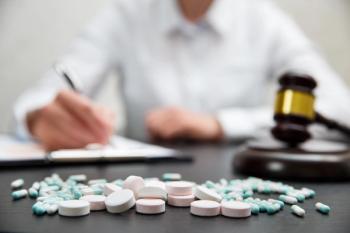
- September 2015 Specialty Pharmacy
- Volume 81
- Issue 9
Case Studies (September 2015)
What should these pharmacists do?
CASE 1
JW, a 35-year-old man, arrives at your pharmacy with a prescription for an EpiPen. He was discharged from the emergency department (ED) earlier in the day after having an anaphylactic reaction to a bee sting following an incident while cleaning out his garage the previous night. The doctor from the ED recommended he carry an EpiPen with him at all times in case he is stung again.
How would you counsel JW on the use of the EpiPen?
CASE 2
SC is a 31-year-old woman who presents to your pharmacy with a burn on her arm from spilling a pot of very hot water. The burn covers her entire left forearm and appears white when pressure is applied and red when released. The burn is painful to the touch and appears to involve the first layer of skin.
Is it appropriate to treat this burn with OTC self-care? If so, what would you recommend for treatment?
ANSWERS
Case 1: Each prefilled auto-injector contains 1 dose of epinephrine indicated for use in emergency allergic reactions. Because JW weighs more than 15 kg (33 lb), he requires an adult dose of 0.3 mg. If JW is stung by a bee, he should be aware of symptoms of anaphylaxis such as trouble breathing, wheezing, facial swelling, throat closing, fast heartbeat, anxiousness, or hives. If JW is experiencing such symptoms, he should immediately inject 1 dose into the middle of his outer thigh (through clothing, if necessary) and hold the apparatus there for 10 seconds as the medication is released. Upon removing the EpiPen, he should massage the injection site for an additional 10 seconds. If symptoms continue or return, JP may use a second injection. He should then then seek emergency medical care and notify the medical team he has administered epinephrine. The pharmacist should also counsel JW about the potential adverse effects of epinephrine use such as increased or irregular heartbeat, sweating, weakness, shakiness, paleness, anxiety, dizziness, breathing problems, or nausea—all of which should subside with time.
Case 2: Yes, this burn qualifies for OTC self-care. However, the appropriateness of self-care management depends on the burn degree and percentage of body surface area (BSA) involved. First-degree burns encompassing <12% BSA are typically suitable for self-care. SC’s burn can be classified as a first-degree burn because it involves the first layer of skin and is painful to touch, red, and white with pressure. Scarring is unlikely with this type of burn. Self-care is never appropriate for second-or thirddegree burns more than 3 inches in diameter. Assuming the palm of your hand represents 1% BSA, you can apply this to the rule of nines in adult patients. This rule assigns a percentage of total BSA to each body part. The anterior trunk (9%), posterior trunk (9%), and each leg (18%) totals 36%; the head and neck (9%) and each arm (9%) totals 18%; and the genitals represent 1%. Since SC’s burn involves only her left forearm, we know it is less than 12% of her BSA. SC should cleanse the burn with cool water (15-20°C) until the pain subsides (preferably within 30 minutes). She should then apply a topical antibiotic to the wound since her skin is broken (topical anesthetics are preferred if skin is not broken). Topical antibiotics are inexpensive and can be found in ointments, creams, or sprays. Some OTC antibiotic options include Neosporin (bacitracin zinc, neomycin, polymyxin B), Polysporin (bacitracin zinc, polymyxin B), and Bacitracin Plus (bacitracin zinc). SC should then apply an appropriate wound dressing to help prevent infection. She should change the wound dressing and reapply the antibiotic as needed (after showers, baths, exposure to moisture, loss of adherence, dressing becomes malodorous). No dressing should remain in place for more than 7 days. SC may also take the recommended dose of oral OTC analgesics (acetaminophen, ibuprofen, or naproxen) for pain, assuming she has no contraindications.
Dr. Saulsberry is an outcomes research fellow at Hartford Hospital, Hartford, Connecticut. Dr. Coleman is a professor of pharmacy practice, as well as codirector and methods chief, at Hartford Hospital Evidence-Based Practice Center at the University of Connecticut School of Pharmacy.
function showAnswer() {document.getElementById("answer").style.display = 'block';document.getElementById("link").style.display = 'none';}
Articles in this issue
about 10 years ago
FAST Generics Act Reintroduced in Congressabout 10 years ago
FDA Concedes Agency Has Difficulty Adequately Regulating Genericsabout 10 years ago
Hepatitis C Activity Inhibited by OTC Allergy Drugabout 10 years ago
3-Drug Therapy Deemed Effective Hepatitis C Treatmentabout 10 years ago
Treating Hepatitis C May Yield Economic Benefitsabout 10 years ago
Can You Read These Rxs? (September 2015)about 10 years ago
Pet Peeves (September 2015)about 10 years ago
Generic Product News (September 2015)Newsletter
Stay informed on drug updates, treatment guidelines, and pharmacy practice trends—subscribe to Pharmacy Times for weekly clinical insights.


















































































































































































































